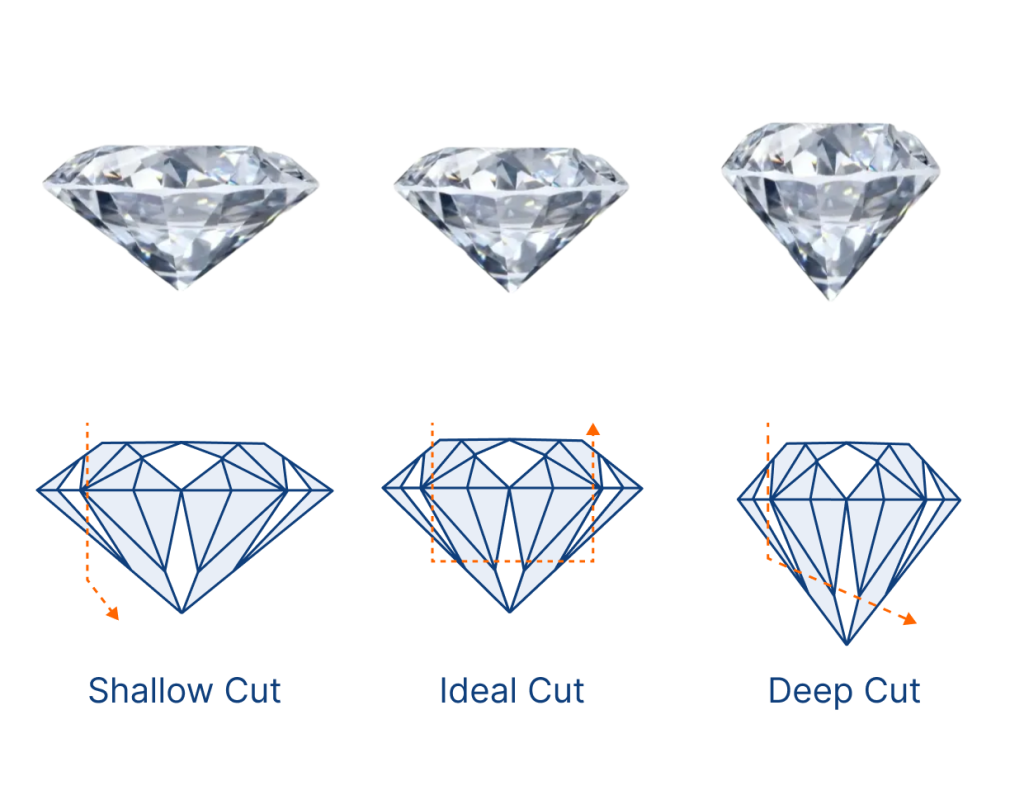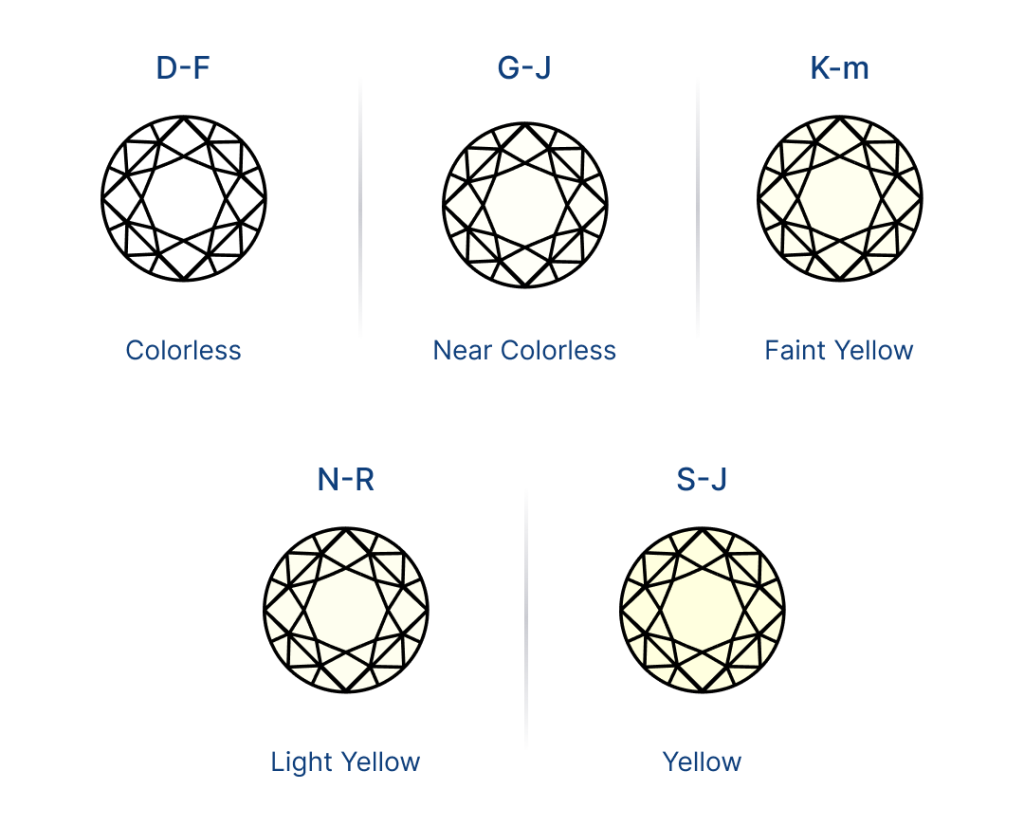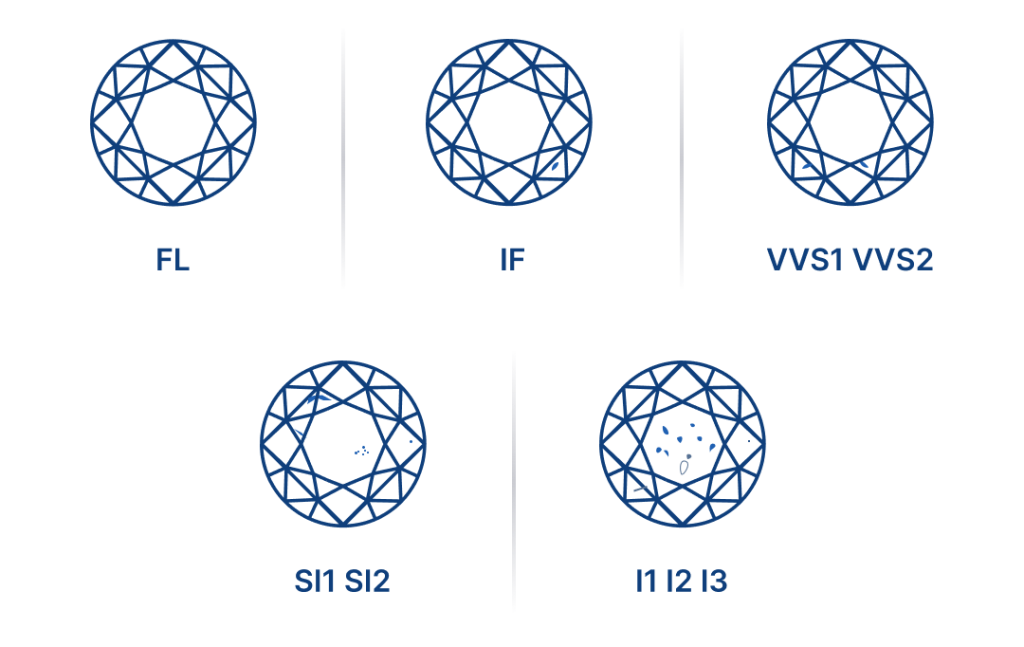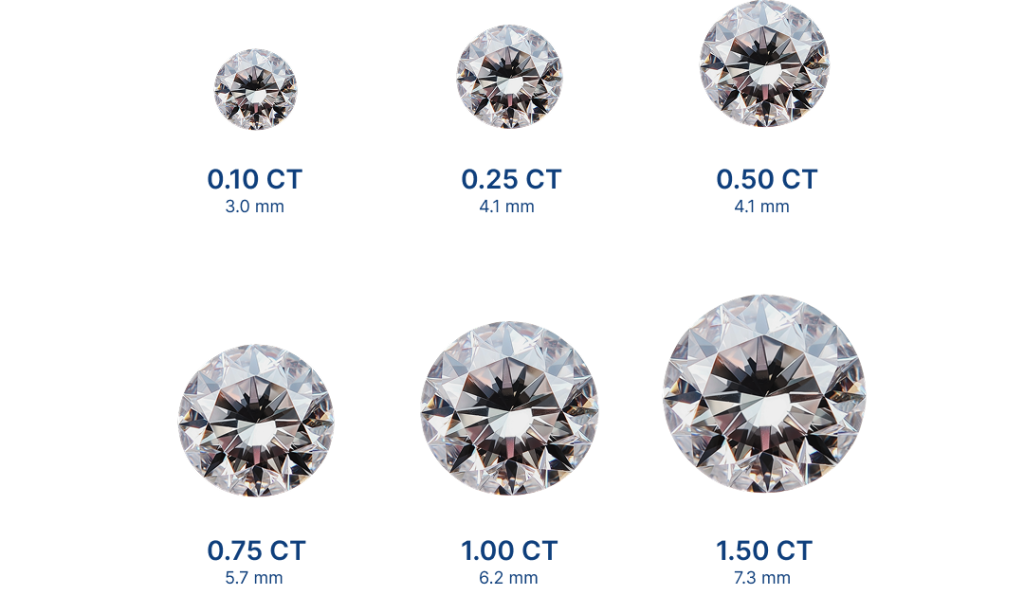Cut
The cut of a diamond affects how well it reflects light, impacting its brilliance and sparkle. A well-cut diamond appears more radiant, while a poorly cut one may look dull.
Cut Grades:
- Excellent – Maximum brilliance and sparkle.
- Very Good – Slightly less brilliance but still beautiful.
- Good – Adequate sparkle with some light loss.
- Fair – Noticeable lack of brilliance.
- Poor – Dull appearance with little reflection.
The 4 C’s of Diamonds refer to Cut, Color, Clarity, and Carat Weight, which determine a diamond's quality and value.


Color
Diamond color is graded from D (colorless) to Z (light yellow or brown). The less color a diamond has, the more valuable it is.
Color Grades:
- D-F – Colorless (highest quality).
- G-J – Near colorless (slight warmth).
- K-M – Faint yellow tint.
- N-Z – Noticeable yellow or brownish tint.
Clarity
Clarity refers to the presence of internal flaws (inclusions) and surface blemishes. The fewer imperfections, the more valuable the diamond.
Clarity Grades:
- FL (Flawless) – No inclusions or blemishes.
- IF (Internally Flawless) – No internal inclusions.
- VVS1-VVS2 (Very Very Slightly Included) – Tiny inclusions, difficult to see.
- VS1-VS2 (Very Slightly Included) – Minor inclusions, slightly visible under magnification.
- SI1-SI2 (Slightly Included) – Noticeable inclusions under magnification.
- I1-I3 (Included) – Visible inclusions, affecting brilliance.


Carat Weight
Carat weight refers to the size and mass of a diamond, with 1 carat = 200 milligrams. Larger diamonds are rarer and more expensive.
Common Carat Sizes:
- 0.25 ct – Small, delicate.
- 0.50 ct – Noticeable but modest.
- 1.00 ct – Classic solitaire size.
- 2.00 ct and above – Statement diamonds.
The characteristics of mined and lab-grown diamonds are clarified by the comparative chart.
| Feature | Lab-Grown Diamond 💎 (Synthetic) | Natural Diamond 💎 (Mined) |
|---|---|---|
| Formation | Created in a controlled lab using high-pressure high-temperature (HPHT) or chemical vapor deposition (CVD). | Formed naturally over billions of years under extreme pressure and heat inside the Earth's crust. |
| Origin | Man-made, scientifically engineered. | Mined from the Earth. |
| Time to Form | A few weeks to months. | 1 to 3 billion years. |
| Chemical Composition | Pure carbon, same as natural diamonds. | Pure carbon, sometimes with trace natural elements. |
| Appearance | Identical to natural diamonds, with the same brilliance and fire. | Unique characteristics due to natural formation process. |
| Clarity & Inclusions | Fewer inclusions, more controlled clarity. | May have natural inclusions and imperfections. |
| Price | 40-80% cheaper than natural diamonds. | More expensive due to rarity and mining costs. |
| Rarity | Readily available, can be mass-produced. | Limited supply, making it rare and valuable. |
| Environmental Impact | More eco-friendly, as it doesn’t involve mining. | Mining can cause environmental damage and habitat destruction. |
| Resale Value | Lower resale value compared to natural diamonds. | Higher resale and investment value. |
| Certification | Certified by IGI (International Gemological Institute) or GIA (Gemological Institute of America). | Certified by GIA, AGS, and other major gemological institutes. |
| Market Demand | Gaining popularity due to affordability and ethical sourcing. | Traditional choice for engagement rings and luxury jewelry. |
